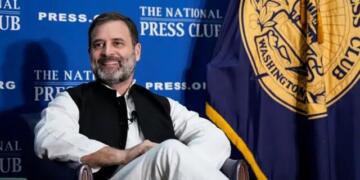India’s economy suffered a tremendous setback in 2020, much like all developing countries did as an aftermath of the Covid-19 pandemic. 2020 was a painful year. The world had no vaccines for Covid-19, and treatment regimes were not well known and speculative at best. Doctors and medical staff were inexperienced at handling such a grave public health crisis. Furthermore, lockdowns were much more stringent last year. 2021, however, has proven to be a better year for the economy. In India, the second wave was definitely devastating. We clocked over 4,00,000 daily infections during the peak of the second wave. However, no nationwide lockdown was imposed, and the effects of the same are beginning to show.
There is no reason why India’s post-Covid-19 economic recovery should not be taught in business schools around the world. It is an achievement which no other country has been able to claim. Economic recovery has become very difficult, especially for developing countries, in the backdrop of new and more virulent strains of novel Coronavirus emerging from around the world.
Given India’s size and vastness, not to mention its 1.4 billion strong population, for our country to achieve an economic rebound of this magnitude despite being battered by the second wave of Covid-19 is nothing short of miraculous.
According to a report by Nomura, the business activities in the country have surpassed the pre-pandemic levels. Nomura India Business Resumption Index was at 102.7 for the week ending on August 29 from 101.3 the week prior. Meanwhile, India registered a GDP growth of 20.1 per cent in the first quarter of 2021-22 as compared to a contraction of 24.4 per cent in Q1 2020-21. Additionally, the output of eight core Indian sectors grew 9.4 per cent in July due to strong growth. In the previous month, core sector output had grown by 9.3 per cent.
Read more: Business activity in India has surpassed Pre-Pandemic performance
Given how large India’s population is, Covid-19 promised to wreak havoc across the country. We are not only a country with a large population, but also have one of the highest population densities in the world. With 455 people per km2 as of 2018, Covid-19 was all set to devastate India. But we have fared very well so far.
During the second wave, when India clocked over 4,00,000 cases at its peak, people were frightened, as they should have been. When seen in the context of India’s population size and density, however, the country handled the second wave more than decently, although in retrospect, there is always scope for improvement.
If the number of Covid-19 cases which the Untied States is currently clocking were to be quantified in terms of India’s population and density, the infection numbers would be earth-shattering. India handled the Covid-19 crisis impeccably, and the same is testified to by the diversity of our country and the fact that there are some demographics where there is an all-pervasive taboo against vaccines. Still, India has begun vaccinating more than 1 crore people every day.
India also does not have the kind of cash reserves which a country would ideally hope for to deal with a prolonged Covid-19 crisis. Therefore, the Modi government, since last year, has shown an urgency to reopen the country and the economy. This reopening was done in a very calculated and strategic manner, with the most important sectors being opened up first, and agriculture never even being shut. These pragmatic steps have allowed India the ability to cushion the economic fallout of the Covid-19 pandemic, and we are once again back on the track of growth. India’s story needs to be taught in business schools. There is no reason why the Modi government’s handling of the pandemic should not be a part of economics curricula in India and across the world.






























